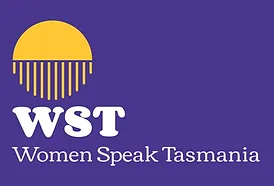
Over the last 10 to 15 years, the number of children and adolescents seeking medical help for gender dysphoria has rapidly increased in Australia. In the context of uncertainty over how to respond to this phenomenon, the Australian Standards of Care and Treatment Guidelines for Trans and Gender Diverse Children and Adolescents (ASOCTG) was developed by an interdisciplinary team of physicians and researchers at the Royal Children’s Hospital Melbourne, and published in 2018.
The development of these guidelines contributed to the widespread adoption of what is called “gender-affirming care” across state medical bodies — as well as by the Australian Professional Association for Trans Health (AusPATH), which defines it as follows:
Gender affirming healthcare emphasises affirming language, psychological and peer support, support for social affirmation, and/or medical affirmation (e.g. puberty blockers for young adolescents, or feminising or masculinising hormones and/or surgery for older clients), as medically necessary and clinically relevant.
It is important to note, however, ASOCTG was not endorsed by the National Health and Medical Research Council (NHMRC), which has been asked by the federal government “to develop new national guidelines for the care of trans and gender diverse people under 18 with gender dysphoria”. These proposed national guidelines will not be finalised until March 2028. In the interim, medical bodies in Australia have an opportunity to reconsider the evidentiary basis for the gender-affirming model of care.
This comes at the same time that, due to growing evidence of harms, several European countries — including Finland, Sweden, Norway, Denmark and the UK — recommended that aspects of the practice of gender-affirming care be restricted. As recently as 1 May 2025, the United States Department of Health and Human Services released its “umbrella review” evaluating “the direct evidence regarding the benefits and harms of treatment for children and adolescents with gender dysphoria”, which concluded that:
many U.S. medical professionals and associations have fallen short of their duty to prioritize the health interests of young patients. First, there was a rapid expansion and implementation of a clinical protocol that lacked sufficient scientific and ethical justification. Second, when confronted with compelling evidence that this protocol did not deliver the health benefits it promised, and that other countries were changing their policies appropriately, U.S. medical professionals and associations failed to reconsider the “gender-affirming” approach. Third, conflicting evidence — evidence that challenged the foundational assumptions of the protocol and the professional standing of its advocates — was mischaracterized or insufficiently acknowledged. Finally, dissenting perspectives were marginalized, and those who voiced them were disparaged.
Gender ideology and the risks of gender-affirming care
The ideological premises of gender-affirming care are that, irrespective of age: children know their gender and healthcare needs; their gender identity will remain stable; affirmation (social, medical and surgical) is necessary to assist mental well-being; incongruence between gender identity and biological sexed reality is normal; and any distress experienced by youth is the result of intersectional vulnerabilities and prejudice.
Australian governmental institutions have embraced gender ideology, as is evidenced by the changing definitions of commonly used terms on governmental websites, the replacement of “sex” with “gender” as a protected characteristic in anti-discrimination legislation, the implementation of anti-conversion therapy legislation, and the threat of discrimination claims from the human rights commissions if doctors fail to use preferred pronouns during consultations. This legal restriction that Australian doctors now face compels them to affirm a child’s gender identity and disregard the importance of neutral exploration of a child’s symptoms, the changing capacity for abstract concepts with maturity, and the time-frame of identity development which extends into adulthood.
Recommendations to support distressed children with a psychotherapy first-line — what is sometimes called “watchful waiting” — are, in turn, criticised by some activists as “medical gatekeeping”, despite there being evidence that a normally timed puberty leads to resolution of symptoms in 85 per cent of children with gender dysphoria. (Though it should be noted that the authors of the study in question “recognized that the boys … were seen during a period of time when treatment recommendations, if such were made, often aimed to reduce the gender dysphoria between the child’s felt gender identity and biological sex”.) AusPATH rejects stand-alone psychotherapy, even though such a stance is antithetical to usual child psychiatric practice and psychiatrists reject claims that equate psychotherapy with conversion therapy.
ASOCTG also encourages the social transition of children — which includes changing names and pronouns of children — in home or school environments, according to the wishes of the child. In the case of older adolescents, this might include breast binding and genital tucking, or the use of padding and prostheses.
According to the guidelines, medical transition is, in turn, facilitated by the prescription of puberty blockers and cross-sex hormones. Despite arguments that puberty blockers simply “pause” puberty, they are most often a step towards cross-sex hormone treatment that will irreversibly change a child’s physical features. Although children are promised an opportunity to “change sex”, the reality is potentially life-long medicalisation.
Moreover, medical transition can cause potentially serious physical complications — including bone density loss (osteoporosis), sexual dysfunction (anorgasmia), metabolic and cardiovascular complications, thromboembolic (stroke) risk, mood changes, pelvic floor dysfunction and surgical complications. There is also evidence that puberty blockers can interfere with pubertal hormonal changes necessary for brain development. The risks of infertility and permanent sterility require children to decide upon ethically challenging fertility preservation at a time in their lives when many have not experienced their first romantic relationship.
Is gender-affirming care truly “life-saving” care?
The assertion that medical transition is “life-saving” and urgently required is a frequently made claim that can have the effect of coercing parents, policy makers and institutions to suppress some of their questions and deeper concerns.
And yet an independent review of data on rates of suicide among young gender dysphoria patients of the Tavistock and Portman NHS Foundation Trust, following the 2020 restriction of puberty blocking drugs, suggests that medical transition is unlikely to mitigate suicide risk among trans-identified youth. On the contrary, a large Finnish study concluded that it is other co-occurring mental health conditions that are associated with suicide — as a result, the authors stressed the need for professionals to treat other conditions, such as trauma or autism, rather than rush to provide medical transition or surgery.
Despite the clear need for holistic care, scientific reviews, an independent service review and a recent Family Court finding have all demonstrated that some Australian specialist gender clinics do not, in fact, offer the comprehensive treatment — including for that of co-occurring conditions — they promise.
Doctors are unable to confidently predict which child will, and will not, persist in their gender identity. Detransitioners, or those experiencing regret, often present several years after interventions are commenced and fail to notify their original treatment provider. Their experience is not taken into account by ASOCTG, and hence guidelines are not provided regarding how best to support a young person wishing to cease their medications — an omission mirrored by lack of governmental funding for organisations, such as Genspect, that support detransitioners.
Notwithstanding mounting evidence of harms and international practice changes, the Australian Society of Plastic Surgery recently lobbied the federal government to provide Medicare rebates for 28 gender-affirming surgeries. AusPATH has encouraged those advocating for this change to refer explicitly to the “life-saving” properties of such medical interventions.
The suppression of dissent
With the release of the review by the US Department of Health and Human Services, the United States is simply the latest country to reject the premises of the gender-affirming model of care. The document highlights the way that major US medical and mental health associations (MMHAs) have become susceptible:
to institutional biases, including groupthink and the disproportionate influence of vocal, specialized subcommittees. These specialized groups may receive broad deference from the larger organization, especially when their initiatives are framed in the language of civil or human rights. Consequently, MMHAs can inadvertently become echo chambers where dissent is suppressed, confirmation biases go unchecked, and professional deference is exploited.
Australia is not immune to this same condition. When poorly evidenced treatments with what may turn out to be irreversible effects and serious side-effects are provided to children, usual medical practice is to provide treatment within clinical trials or with the support of hospital ethics committees. Despite serious child protection challenges inherent to experimental treatments, the involvement of hospital ethics committees or treatment provided within the clinical governance offered by clinical trials is not standard practice in any public gender clinic in Australia. Private practitioners have no established governance to routinely monitor decision making. Due to lack of infrastructure, there are still no means for authorities to identify the total number of affected children who have been treated in the public and private sector to date.
Returning to a better form of care
Vulnerable Australian youth deserve sensitive, good quality, evidence-based guidelines. I do not believe the ASOCTG has been written to a sufficient standard that should guide the profession in this complex area of healthcare. In future, “Australian Standards” should be a protected title only to be used with reference to governmentally endorsed documents produced to the highest standard.
Excellence in paediatric healthcare requires a general setting free from ideological coercion, where decisions are made on the basis of good quality evidence-based medicine. Doctors need a federal commitment to establish universal safeguards, monitor long-term outcomes, and return to a model of holistic care provided within general mental health settings that includes care for detransitioners.
Meaningful change to support the improved health of trans youth requires an uncompromising return to the highest standard of evidence-based medicine. But when we do, we will also need to brace ourselves for the harm that may have already been caused.
Dr Catherine Llewellyn is a fellow of the Royal Australian and New Zealand College of Psychiatrists (FRANZCP) and completed advanced training in both Child and Adolescent Psychiatry and Addiction Psychiatry. She is also a fellow of the Australasian Society of Lifestyle Medicine (FASLM).
Source: abc.net.au
